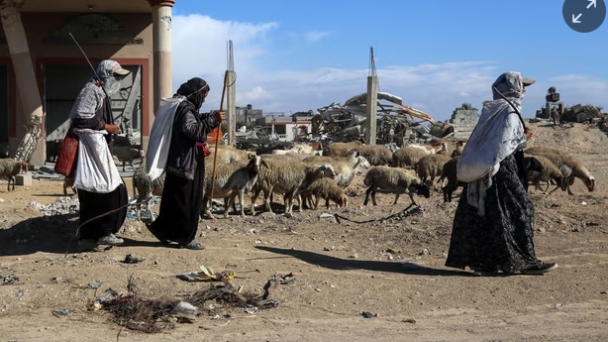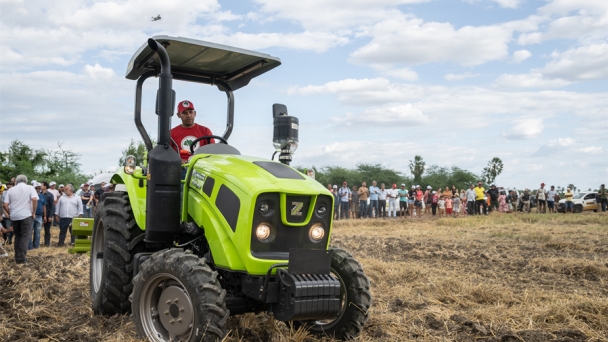November 23, 2024 | 01:55 GMT +7
November 23, 2024 | 01:55 GMT +7
Hotline: 0913.378.918
November 23, 2024 | 01:55 GMT +7
Hotline: 0913.378.918

When two poultry processing plants closed in the state last year, economist Jada Thompson began to ponder what the impacts would be for financiers of these operations and what might be the challenges for poultry farmers new to the industry.
Poultry production is the top agriculture sector in Arkansas generating more than $5 billion annually, according to The Poultry Federation. There are 6,500 or more farms in the state that have at least some form of poultry production.
“One of the questions was about what kind of risk was associated with lending and the risks involved for new producers,” said Thompson, an assistant professor for the University of Arkansas System Division of Agriculture who specializes in the economics of poultry.
The poultry industry is vertically integrated, which means poultry companies contract with growers and supply those growers with birds and feed. The growers supply the rest, including barns, electricity, water and labor.
About 7.35 billion pounds of broilers were produced in the state in 2022, ranking it third in the U.S. for broiler production. That accounted for about 38% of all poultry production in Arkansas, making it the largest sub-sector.
The processing plant is the conduit between the farm and the consumer.
Thompson said that risk is part of any enterprise and in the case of the plant closures, growers had to figure out what to do with the houses they have to raise birds. Some growers had their contracts switched to a nearby plant with the same integrators, while others’ contracts were bought out and had to scramble to find contracts to process their poultry for continued cash flow.
“In the unfortunate circumstances there isn’t another plant or integrator within a drivable distance, and assuming no alternative use of poultry growing complexes, the growers have no incoming revenues to pay debt obligations,” she said.
All of this led Thompson to invite graduate student Kylie Roseler to analyze the risks. Shelby Rider, a program associate, brought Geographic Information System skills and fellow assistant professor Ryan Loy brought his farm business management knowledge.
The result of this collaboration is the fact sheet “Location, Location, Location: Mapping the Risks for Arkansas Broiler Production,” which evaluates the risks for poultry producers and lenders by quantifying low, average, medium or high-risk areas. Among the factors the authors identified in determining risk level was the local cost of electricity, the location of feed mills, tax liabilities and the proximity of processing plants.
For example, their research showed that low-risk areas typically have more than four processing plants in their radius and are in the lowest 50% for electric rates, whereas high-risk zones typically have only one processing plant and typically are in the top 50% of electric rates.
Using these factors, the team developed a map showing areas of highest risk being in Jefferson County, which has only one integrator, and lowest risk, in Northwest Arkansas, where there is a high concentration of integrators.
Regardless of risk areas, poultry can be susceptible to biological hazards such as Avian Influenza, Newcastle, or Marek’s disease. These diseases spread rapidly when houses are in close proximity, the report notes.
The fact sheet concludes that “having high risk doesn’t mean that a location isn’t a worthy investment, just that there are obstacles a grower could face. Overall, this risk map aims to provide information so that informed decisions can be made.”
“This fact sheet is going to be extremely helpful to chicken farmers,” Loy said. “If you’re looking to get into the industry, you can use this fact sheet and say, ‘here are the riskiest areas of production in terms of the cost of electricity and the number of processors that are within some reasonable distance of you. You can look at the fact sheet and say, where are the least risky areas to poultry farm?’
“On the lending side, the less risky you are, the more attractive you are to a lender,” he said. “A lender can see the location, evaluate the risk and that can come into play when it comes to securing credit.”
Roesler, who graduates May 2025 with a joint degree from the University of Arkansas and Ghent University in agricultural economics and rural development, said she became involved by “shifting from a scientific perspective of agriculture to the economic side.”
“During my undergraduate studies in poultry science, I started to understand the growing importance of food security,” Roesler said. “However, through internships working on a farm and in a lab, I found my niche skills and how I can contribute to improving food security is through economic means.”
She said the most surprising thing about this project was “how the interests of individual producers might not align with the overall stability of the industry.”
As noted in the conclusion, “the consolidation of the industry is advantageous for a farmer’s contract security but poses a biosecurity risk,” Roesler said. “This observation was particularly significant for me, given that my thesis examines these disease risks in the context of international trade.”
(TBP)

(VAN) Israeli attacks have destroyed huge areas of land used for crops, with 90% of cattle killed, analysis shows.

(VAN) Interview with Manuel Barange, Director of FAO’s Fisheries and Aquaculture Division.

(VAN) Finances, politics and a cultural divide push the agriculture sector to the brink and stir up anger.

(VAN) Modest operations account for more than 90% of global food producers.

(VAN) The farmers' demonstration was best summed up in two images: real tractors being driven by farmers around Parliament Square, and beside them a collection of toy tractors being peddled around by their children.

(VAN) G20’s initiative is officially launched in Brazil. FAO will host the Global Alliance’s Support Mechanism.

(VAN) China has provided and mobilized more than 177 billion yuan of project funds since 2016 in support of other developing countries' climate response, the Xinhua News Agency reported.